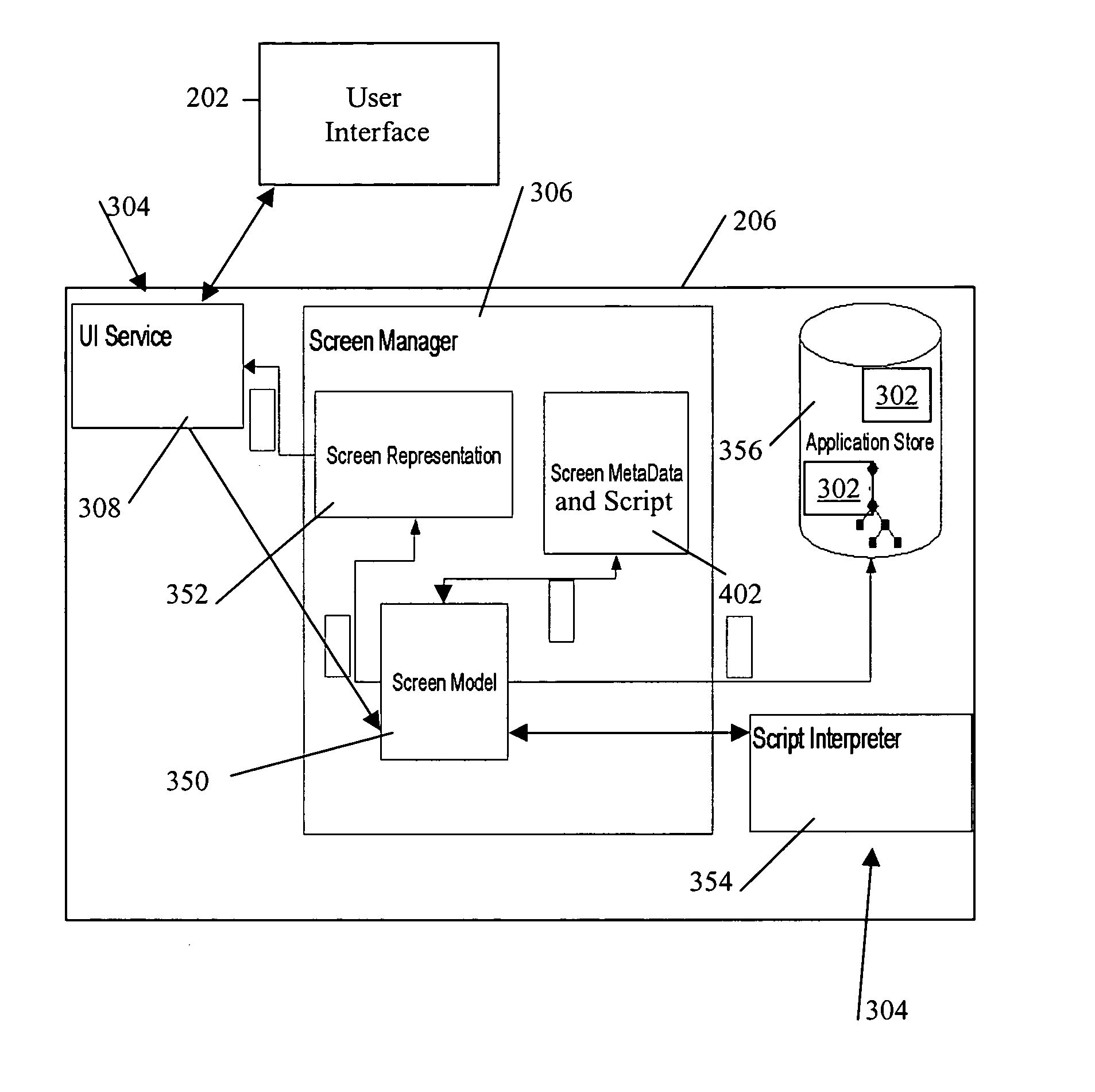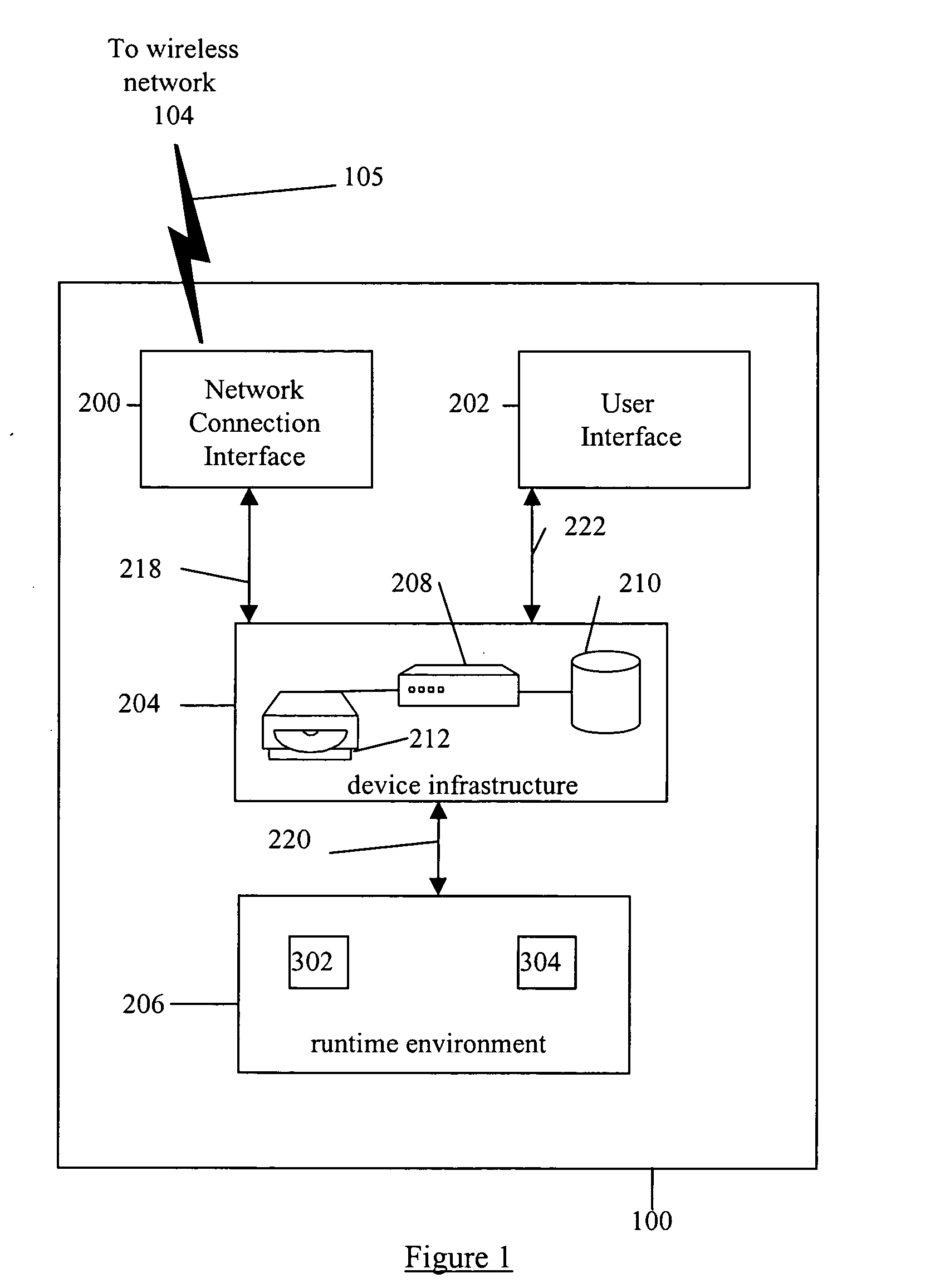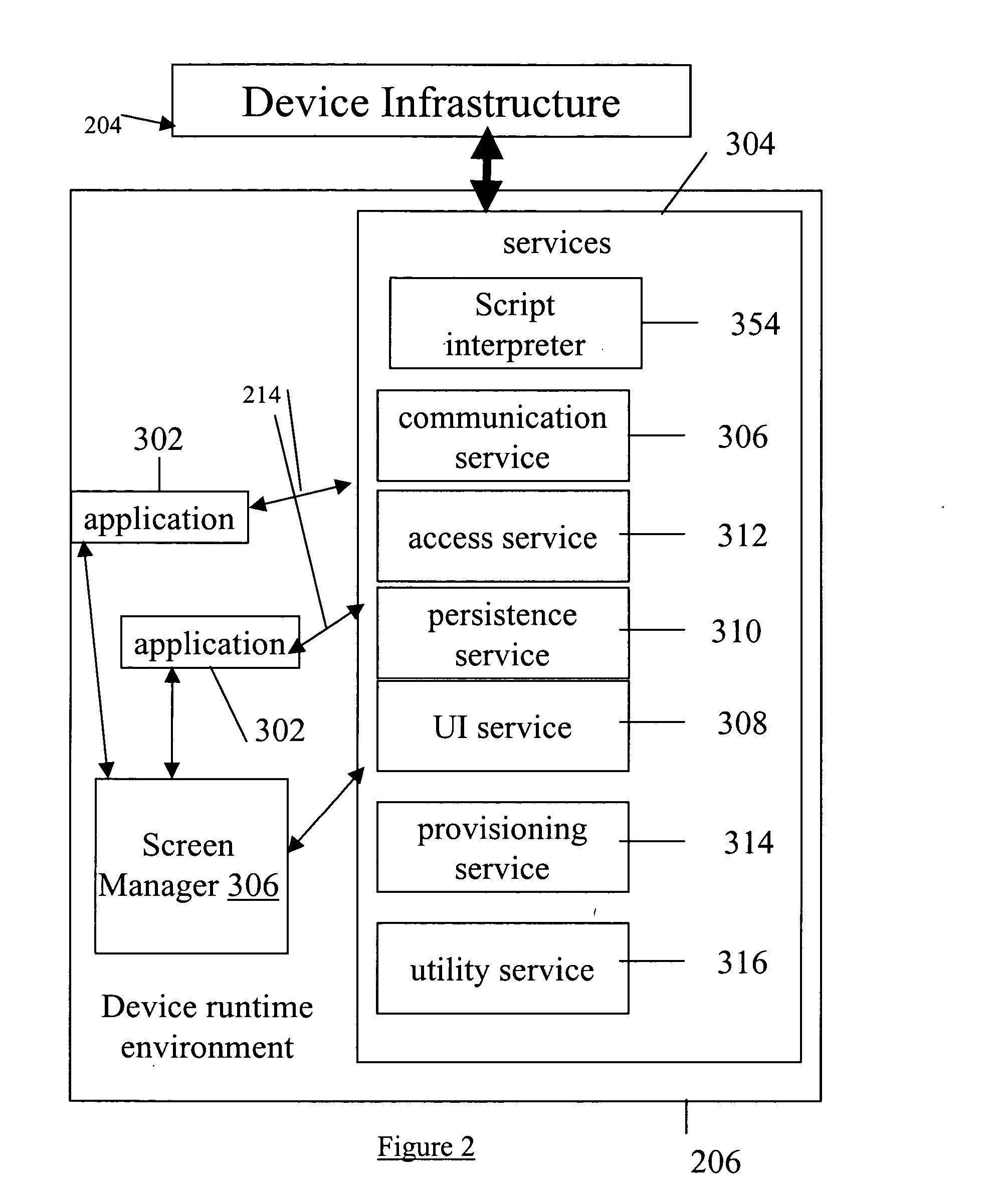System and method for interactive wireless applications with conditional UI controls and screen navigation
a wireless application and screen navigation technology, applied in the field of system and method for interactive wireless applications with, can solve the problems of increasing the complexity and therefore storage requirements of the application on the wireless device, and achieve the effect of facilitating the representation of these visual components and increasing the complexity and therefore storage requirements of the application
- Summary
- Abstract
- Description
- Claims
- Application Information
AI Technical Summary
Benefits of technology
Problems solved by technology
Method used
Image
Examples
example b
ontrol Script
[0055] Referring to FIG. 6, an alternate method of manipulating conditional controls 500 is through a custom script portion 600 attached to the application 302. In the sample application as described above in Example A, the driving 502 choice control choiceCountry specifies an executable script (here shown as an ECMAscript fragment by example only) to be evaluated when a change of selection occurs. In this configuration, the dependent relationship is associated to the script called localizeControls. When called, the script determines which controls 500 of the screen on the interface 202 (see FIG. 4) are made visible to the user based on the current state of choiceCountry. This script mechanism illustrates an alternate method of linking driving 502 and dependent 504 controls whereby the display logic is specified by the application developer of the application 302.
example c
Screen Metadata / Dependent Script
[0056] The following example in FIG. 7 shows how the driving control 502 may affect the re-evaluation of dependent controls 504 whereby the dependent control 504 specifies its own criteria for display. This criteria may be specified as a separate code section, or as shown in this example, as an inline evaluation. In the sample application 302, the passwordEntry edit field represents the driving control 502. Changes to the edit field trigger re-evaluation of the conditional controls specified through the XML. The specification of the dependent controls 504 further refine the application 302 behaviour by evaluating a boolean condition. In the sample provided, a password length is determined to be of minimum length prior to adding a menuitem to transition to the next page of the screen representation displayed on the interface 202 (see FIG. 1). Failure to satisfy the condition of minimum length forces a warning label to be displayed by the user interface...
example d
Script Condition
[0057] In this example shown in FIG. 8, there is no driving control 502 specified. The “dependent” control 504 in this instance specifies its own script to evaluate. Evaluation of the script element will gate display of the control 504. The script may be referenced as a function local to the application 302 XML, or may be an inline script. As shown, the discount label is not tied to any driving control 502. The discount label includes an ECMAScript fragment 800 that determines if the minimum number of items are selected to be eligible for additional discount.
PUM
 Login to View More
Login to View More Abstract
Description
Claims
Application Information
 Login to View More
Login to View More - R&D
- Intellectual Property
- Life Sciences
- Materials
- Tech Scout
- Unparalleled Data Quality
- Higher Quality Content
- 60% Fewer Hallucinations
Browse by: Latest US Patents, China's latest patents, Technical Efficacy Thesaurus, Application Domain, Technology Topic, Popular Technical Reports.
© 2025 PatSnap. All rights reserved.Legal|Privacy policy|Modern Slavery Act Transparency Statement|Sitemap|About US| Contact US: help@patsnap.com



